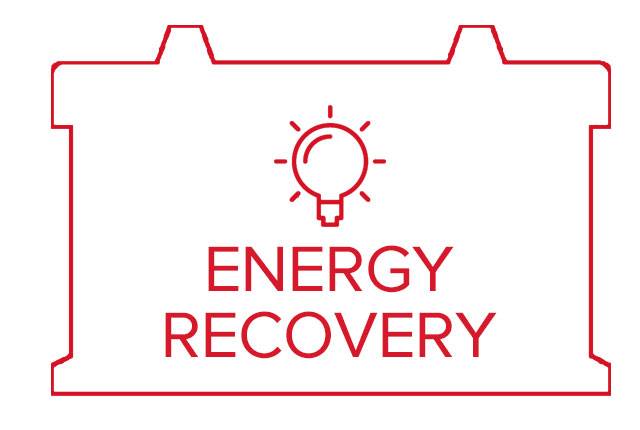WHAT DOES “ENERGY RECUPERATION” MEAN?
BRAKING ENERGY RECUPERATION
Modern vehicles use so-called “energy recuperation” to recover braking energy.
When you brake or accelerate, an energy conversion takes place,
this energy can be used again for driving. We’ll explain how it works!

Energy recuperation simply means recovering the energy from braking.
When you slow down or brake, usually some of the kinetic energy from your vehicle is lost. The energy recuperation process recovers some of this energy.
During this process, the alternator is deliberately subjected to more stress, the voltage is increased and the charging process is accelerated. This provides a boost of energy to the battery. The alternator converts the kinetic energy into electricity. In principle, this works just like a bicycle dynamo. During acceleration phases and normal operation, the power of the alternator can be partially reduced or even set to zero, which means that more energy is available for the drive.
The vehicle now uses the energy that was previously stored by the battery. This saves fuel and reduces emissions. In this way, our start-stop car batteries can also be thought of as real CO2 and fuel savers.

What does coasting mean?
In simple terms, this refers to the free rolling of the car.
More and more often, kinetic energy is converted into electrical energy during coasting and this charges the start-stop battery.
The coasting assistant sensor tells the driver when to take their foot off the accelerator before a junction or traffic light so that the vehicle can roll along itself and, in doing so, recharge the battery. The coasting assistant sensor works in conjunction with the navigation system and is automatically activated when setting a destination. In a certain speed range, the system then gives the driver a coasting recommendation by means of a symbol in the instrument panel and a discreet acoustic signal.
You might also be interested in the following:

